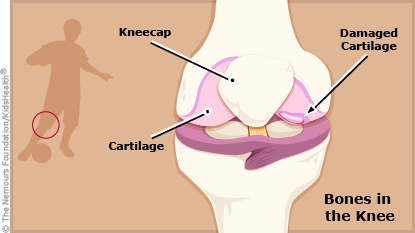OCD Lesion of the Knee: How to Care for Your Child
Rest and appropriate treatment help the OCD lesion heal so your child can eventually return to normal activities.


With osteochondritis dissecans (OCD) of the knee, an area on the surface of one of the bones in the knee joint has weakened or deteriorated. The weakened piece of bone and some of the attached cartilage may loosen and eventually break off from the knee joint. Injury, overuse, and genetic factors all may play a role in the formation of OCD lesions.
Symptoms of an OCD lesion in the knee can include pain, swelling, tenderness, and stiffness. The knee may "lock up," make grinding or popping sounds, or feel unstable.
Treatment depends on the location and severity of the lesion. It may include rest, immobilization of the knee with a cast or brace, and surgery to repair the lesion.

-
Your child or teen should avoid activities that put stress on the knee, such as running, jumping, twisting, and pivoting.
-
Follow the instructions from the health care provider about walking. If your child was given crutches, give reminders about using them safely.
-
Some kids need to wear a brace or cast. Help your child follow the care instructions from the health care provider.
-
For pain, give your child ibuprofen or naproxen as directed by your health care provider.

-
If you haven't already done so, make a follow-up appointment with your child's health care provider or orthopedic surgeon.
-
Follow instructions from the health care provider about taking your child for physical therapy.

Your child:

Your child:

Without treatment, children with an OCD lesion that is loose or breaks off from the bone are at higher risk of developing osteoarthritis.